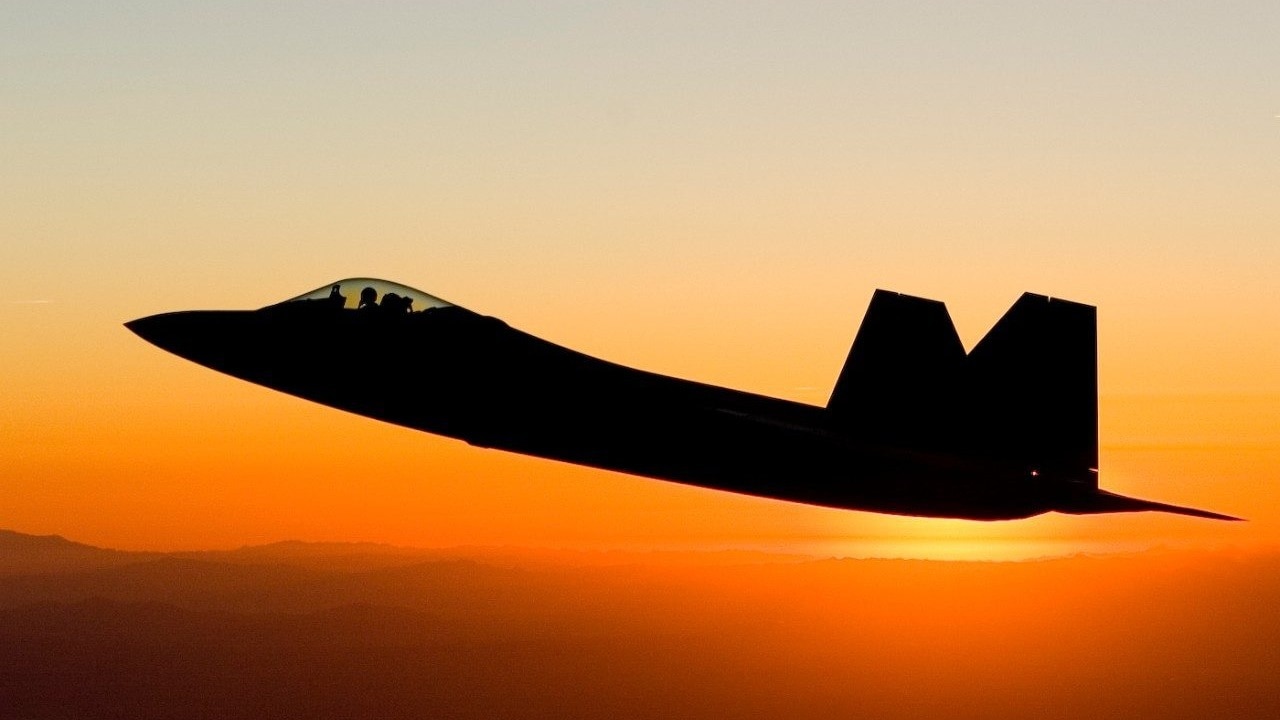If NATO Declared a “No Fly Zone” – The F-22 Could be the Aircraft to Enforce It: There is little chance that NATO would declare a “no-fly zone” over Ukraine. NATO Secretary-General Jens Stoltenberg made it clear, “We are not part of this conflict” – even as there are reports that the United States Air Force’s Lockheed Martin F-35 Lightning II’s have been operating in full stealth mode over Eastern Europe as part of the NATO air policing drills in the region.
Instead of going full “stealth,” former President Donald Trump joked earlier this month to top Republican National Committee donors that the U.S. should “ put the Chinese flag” on its F-22 fighter jets and “bomb the s***” out of Russia, and added “then we say ‘China did it.’ Then they start fighting with each other, and we sit back and watch.”
While Trump’s comments received plenty of laughs and some cheers, there have been suggestions that if a no-fly zone were in the cards, the Lockheed Martin F-22 Raptor could be the aircraft to enforce it. A squadron of the fifth-generation stealth fighters has been deployed to the UAE to thwart drone and missile attacks launched by Hothi rebels.
“F-22 Raptors arrived at Al Dhafra Air Base, in the UAE, today as part of a multifaceted demonstration of U.S. support after a series of attacks throughout January threatened U.S. and Emirati armed forces stationed at the host installation,” U.S. Air Forces Central Command tweeted last month.
F-22: This Raptor Has Claws!
The single-seat, twin-engine, all-weather stealth tactical fighter first entered service in 2005, and has been steadily updated. Even today, it is widely regarded as the most dominant fighter in the world.
The F-22 Raptor is respected for its dogfighting ability and air-to-air maneuverability attributes, especially when compared with any other potential rival. The Raptor is solely operated by the United States Air Force, as it was developed as part of the service’s Advanced Tactical Fighter (ATF) program two decades ago as an air superiority fighter that could also be capable of ground attack, electronic warfare and signals intelligence.
Powered by two Pratt & Whitney turbofan engines and is capable of reaching speeds of Mach 2 (1,534 mph/2,469 kph). The F-22 has a ceiling of 50,000 feet (15 kilometers) and a range of 1,841 miles (2,962 km) without refueling.
The Air Force had originally planned to buy a total of 750 of the F-22s, but the program was cut short to 187 operational aircraft, in addition to the eight test models that had been produced. The high costs of the program, as well as a lack of clear air-to-air missions due to delays in Russian and Chinese fighter programs along with a ban on exports, resulted in the Air Force’s scaling back. The last F-22 Raptor was delivered in 2012.
F-22s to the UAE
While Russia massed its forces on the Ukrainian border prior to launching its unprovoked attack last month, the U.S. Air Force deployed several aircraft to Eastern Europe.
As TheAviationGeekClub.com reported, that included F-16s to Romania, F-15s to Poland and F-35s to Germany.
Yet, the F-22 went to the UAE instead.
One factor could be that the Raptors’ presence would show a commitment to America’s Middle Eastern partners, a point noted by the U.S. Air Force’s Mideast command.
“The unparalleled capabilities of the F-22 in a variety of missions, as well as its ability to interoperate with joint, coalition, allied and partner forces make it ideally suited to serve in the Middle East region during this critical time,” said Lt. Gen. Greg Guillot, 9th AF (AFCENT) commander, via a statement last month. “The Raptors’ presence will bolster already strong partner nation defenses and puts destabilizing forces on notice that the U.S. and our partners are committed to enabling peace and stability in the region.”
Why the F-22 Isn’t in Europe?
Dario Leone of TheAviationGeekClub offers a solid argument for why the F-22 would be the aircraft to enforce a NATO no-fly zone – and cited commentary Air Combat Analyst Connor Hall, who suggested that “8-12 Raptors could sanitize the skies over Ukraine within an hour.”
While that fact may be true, such sweeping of the skies would certainly find us fully locked into a war – likely a nuclear one – with Russia. The F-15s and F-16s are meant to be a deterrent. The same holds true of the F-35, which could just as easily “sanitize” the skies.
Moreover, if NATO finds itself at war with Russia, and we must continue to hope it doesn’t come to that, the F-22s are actually well-positioned to do significant damage to Russian targets in Syria and the Mediterranean already.
But there is another point to consider.
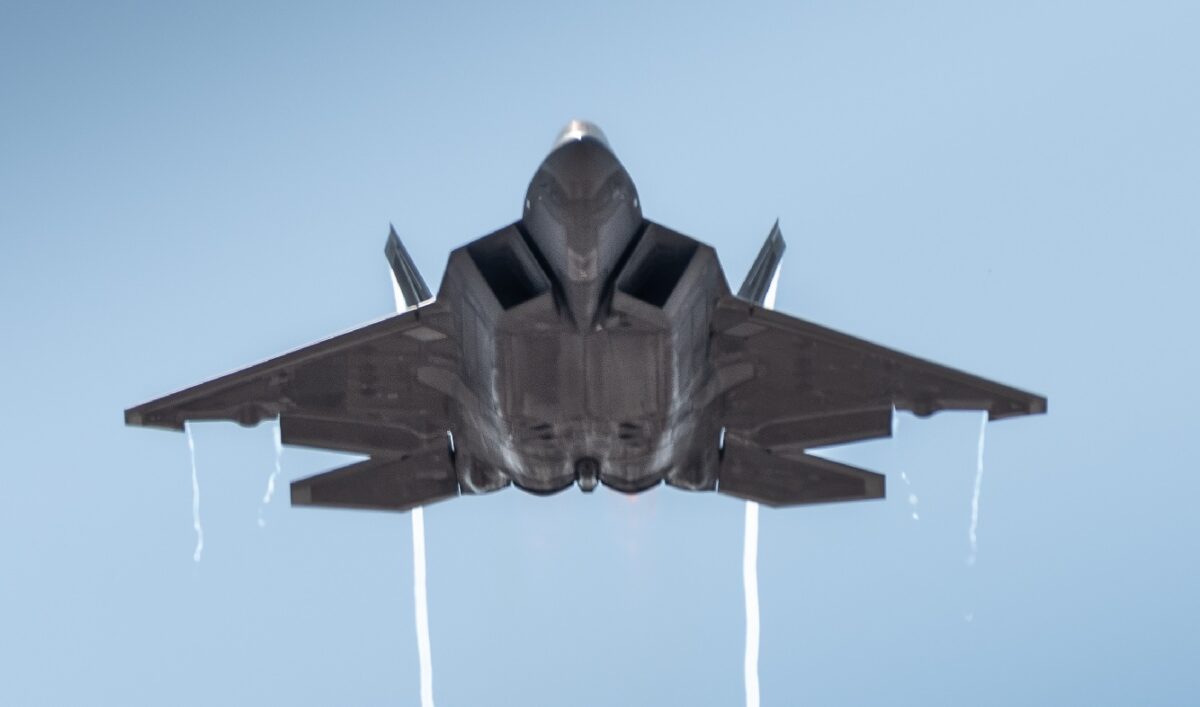
U.S. Air Force Maj. Paul Lopez, F-22 Demo Team commander, performs a high speed pass maneuver during the Fort Worth Alliance air show in Fort Worth, Texas, Oct. 19, 2019. Representing the U.S. Air Force and Air Combat Command, the F-22 Demo Team travels to 25 air shows a season to showcase the performance and capabilities of the world’s premier 5th-generation fighter. (U.S. Air Force photo by 2nd Lt. Sam Eckholm)
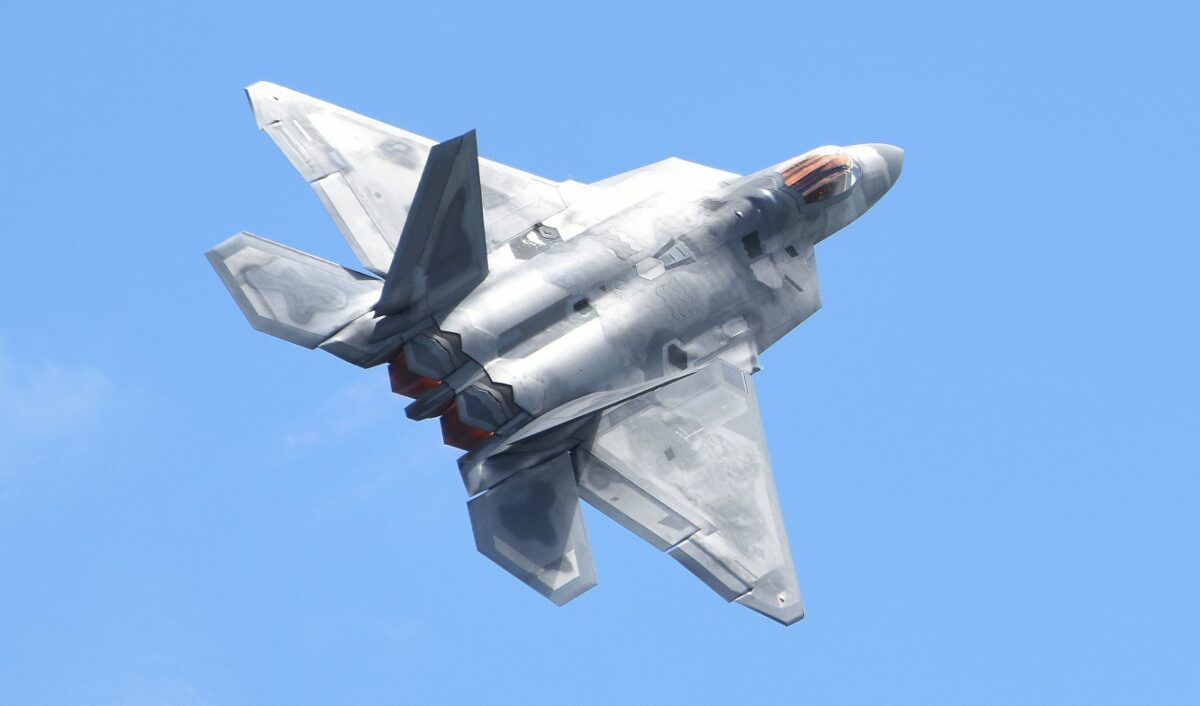
U.S. Air Force Maj. Paul Lopez, F-22 Demo Team commander, performers aerial maneuvers July 14, 2019, at the “Mission Over Malmstrom” open house event on Malmstrom Air Force Base, Mont. The team flies at airshows around the globe, performing maneuvers that demonstrate the capabilities of the fifth-generation fighter aircraft. The two-day event, featured performances by aerial demonstration teams, flyovers, and static displays. (U.S. Air Force photo by Airman 1st Class Jacob M. Thompson)
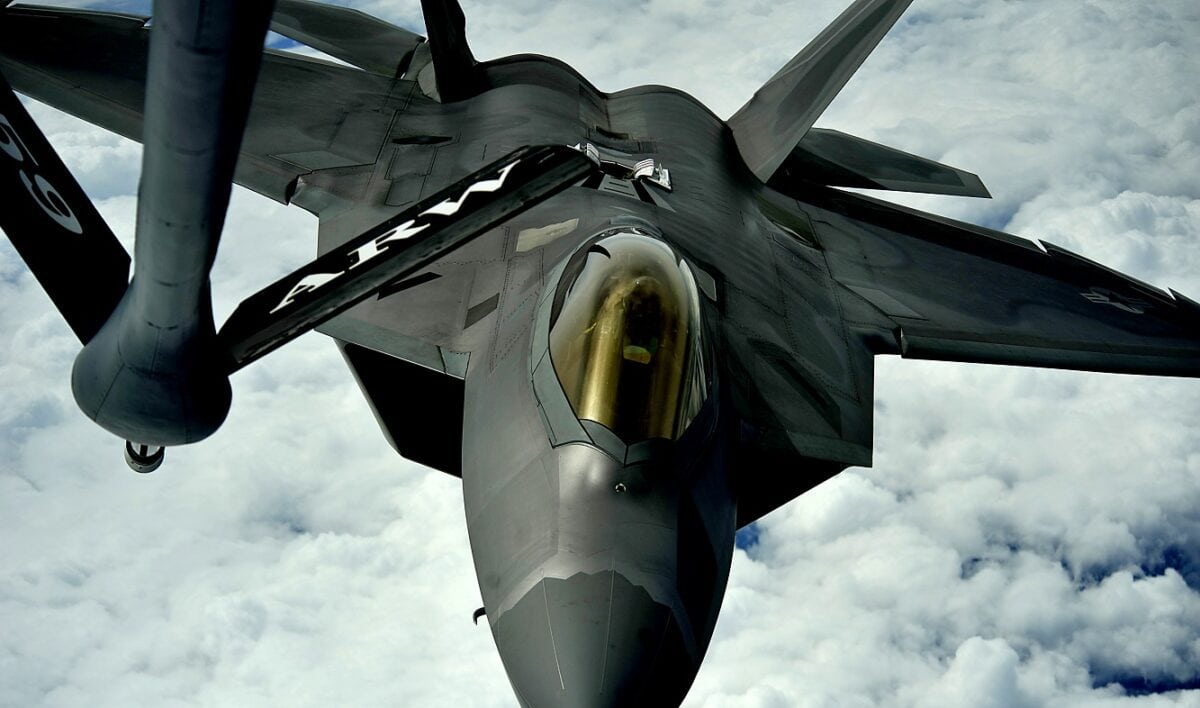
A 1st Fighter Wing’s F-22 Raptor from Joint Base Langley-Eustis, Va., pulls into position to accept fuel from a KC-135 Stratotanker with the 756th Air Refueling Squadron, Joint Base Andrews Naval Air Facility, Md., off the east coast on May 10, 2012. The first Raptor assigned to the Wing arrived Jan. 7, 2005. This aircraft was allocated as a trainer, and was docked in a hanger for maintenance personnel to familiarize themselves with its complex systems. The second Raptor, designated for flying operations, arrived Jan. 18, 2005. On Dec. 15, 2005, Air Combat Command commander, along with the 1 FW commander, announced the 27th Fighter Squadron as fully operational capable to fly, fight and win with the F-22.
The F-22 may be a fine aircraft, but it should be remembered that NATO members increasingly operate the F-35. The Raptor isn’t exactly “yesterday’s news,” but production ended a decade ago, while production is ramping up on the F-35.
The United States wants to see more allies and partners adopt the Lightning II, so sending the F-22 to Europe wouldn’t be the right message.
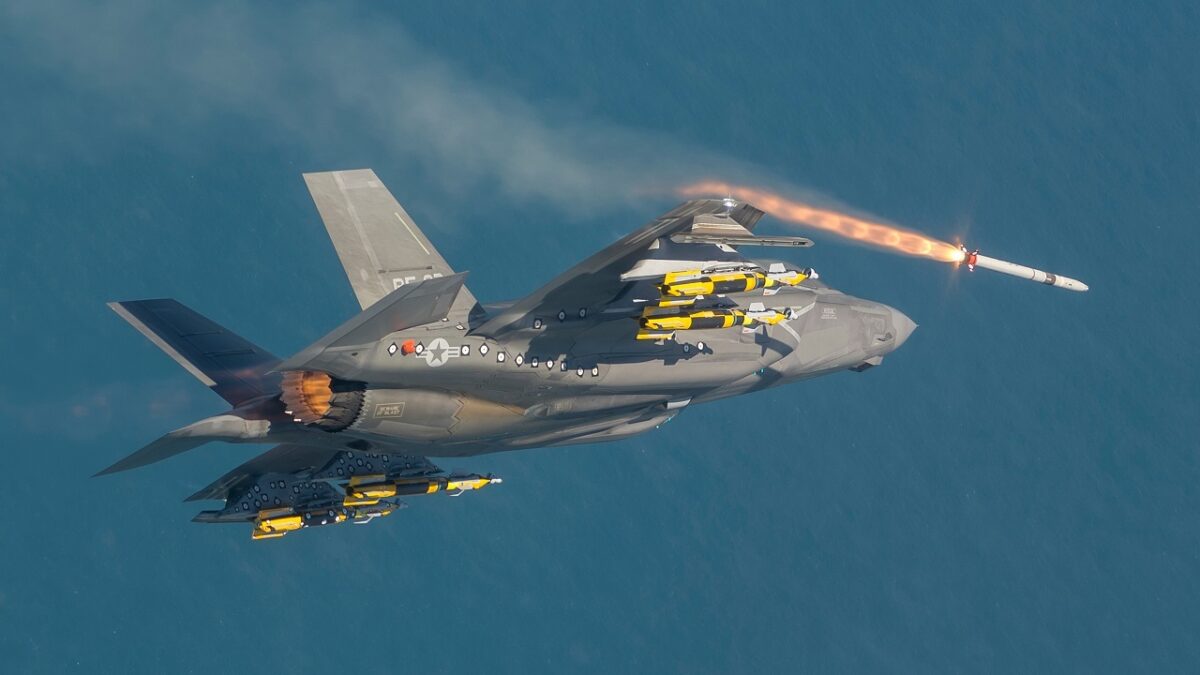
US Air Force F-35 Stealth Fighter.
Now a Senior Editor for 1945, Peter Suciu is a Michigan-based writer who has contributed to more than four dozen magazines, newspapers and websites. He regularly writes about military hardware, and is the author of several books on military headgear including A Gallery of Military Headdress, which is available on Amazon.com. Peter is also a Contributing Writer for Forbes.

